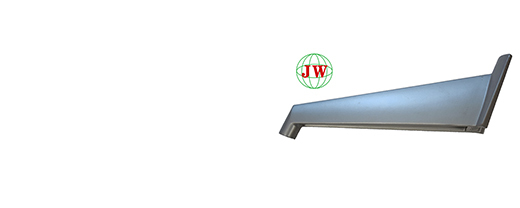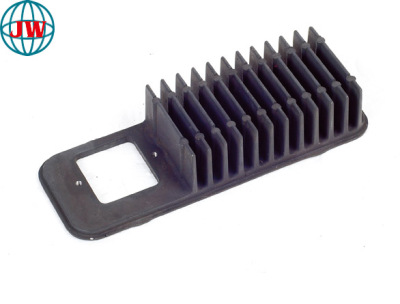
Do you need any suggestions on the material selection of communication components?
2025-04-24 14:53
In the rapidly evolving landscape of communication technology, the performance, reliability, and longevity of communication componentshinge significantly on the materials used in their production. Die casting, a widely adopted manufacturing process for communication components, offers a diverse range of material options, each with distinct properties that can greatly influence the functionality and durability of the final product. Whether you're a manufacturer looking to optimize your production process or an engineer aiming to enhance component performance, understanding the nuances of material selection is essential.
Aluminum Alloys: A Popular and Versatile Choice
Aluminum alloys are among the most commonly used materials in the die casting of communication components, and for good reason. Their lightweight nature makes them an ideal choice for applications where minimizing weight is a priority, such as in portable communication devices like smartphones, tablets, and laptops. A lighter component not only reduces the overall weight of the device, enhancing user experience, but also contributes to energy efficiency, as less power is required to move or operate the device.
Aluminum alloys also exhibit excellent corrosion resistance. They form a thin, self - healing oxide layer upon exposure to air, which acts as a protective barrier against moisture, oxidation, and other corrosive elements. This property is particularly valuable for outdoor communication equipment, such as cell - tower antennas, base station enclosures, and satellite dishes, which are constantly exposed to harsh weather conditions. Additionally, aluminum alloys have good thermal conductivity, allowing them to efficiently dissipate heat generated by the electronic components within communication devices. This helps prevent overheating, which can lead to performance degradation and component failure. Alloys like A380, with its balanced combination of strength, castability, and corrosion resistance, are frequently used in die casting a wide variety of communication parts, from heat sinks to structural frames.
Zinc Alloys: Precision and Cost - Efficiency
Zinc alloys offer unique advantages for the die casting of communication components. One of their key strengths is their ability to produce highly precise parts. Due to their low melting point, zinc alloys can flow easily into complex die - casting molds, enabling the creation of components with intricate details and tight tolerances. This makes them well - suited for small - scale communication components, such as connectors, switches, relays, and some internal electronic parts.
Cost - efficiency is another significant benefit of zinc alloys. The raw material cost of zinc is relatively affordable, and the die-casting process for zinc alloys is often more energy - efficient compared to some other metals. Moreover, zinc alloys can be easily electroplated, allowing for the addition of protective and decorative layers. For example, nickel or chrome plating on zinc-alloy communication connectors not only enhances their corrosion resistance but also improves their aesthetic appeal and electrical conductivity. This combination of precision, cost - effectiveness, and versatility makes zinc alloys a popular choice for many communication component manufacturers.
Magnesium Alloys: Ultra - Lightweight and High - Performance
Magnesium alloys are gaining increasing attention in the communication industry, especially in applications where ultra - lightweight components are required without sacrificing strength. Magnesium is the lightest structural metal, and its alloys offer an impressive strength - to - weight ratio. In the aerospace communication sector, magnesium - alloy die-cast components are used in satellite parts, aircraft communication systems, and other high - performance applications, where reducing weight can lead to significant fuel savings and improved performance.
These alloys also have good damping characteristics, which means they can effectively absorb and dissipate vibrations. In communication devices that are prone to mechanical vibrations, such as those used in mobile vehicles or industrial settings, magnesium - alloy components help minimize noise and ensure the stable operation of sensitive electronic components. However, it's important to note that magnesium is highly reactive, and special precautions need to be taken during the die - casting process to prevent oxidation and ensure product quality.
Copper Alloys: Superior Electrical and Thermal Performance
Copper alloys, including brass and bronze, are indispensable for communication components that require excellent electrical and thermal conductivity. Copper has one of the highest electrical conductivities among metals, making it the material of choice for components such as electrical connectors, printed circuit board (PCB) traces, and waveguides. In high - frequency communication systems, where signal loss and interference need to be minimized, copper - alloy components ensure efficient signal transmission.
Brass, an alloy of copper and zinc, offers additional benefits such as good corrosion resistance and machinability. It is commonly used in the production of communication hardware, like connectors, terminals, and fasteners, where a combination of electrical performance and durability is required. Bronze, on the other hand, with its high strength and wear resistance, is suitable for components that are subject to mechanical stress and friction, such as certain types of switches and relays in communication equipment.
Polymer Composites: For Specialized Applications
In some cases, polymer composites are used for communication components, especially when specific properties like electrical insulation, chemical resistance, or low cost are prioritized. Polymer - based die - casting processes can produce components with complex geometries at a relatively low cost. For example, in the production of non - conductive enclosures for communication devices, protective covers for sensitive electronic components, or lightweight structural parts, polymer composites offer a practical and cost - effective solution. Some polymer composites can also be engineered to have enhanced mechanical properties, making them suitable for components that need to withstand certain levels of impact or stress.
In conclusion, the material selection for communication components is a critical decision that requires a thorough understanding of the specific requirements of each application. Whether it's the lightweight and corrosion - resistant properties of aluminum alloys, the precision and cost - efficiency of zinc alloys, the ultra - lightweight and high - performance characteristics of magnesium alloys, the superior electrical and thermal performance of copper alloys, or the specialized properties of polymer composites, each material has its own unique advantages. By carefully considering these factors and working with experienced material suppliers and manufacturers, you can ensure that your communication components are not only reliable and durable but also optimized for performance and cost - effectiveness.
Get the latest price? We'll respond as soon as possible(within 12 hours)












